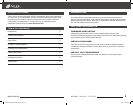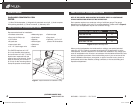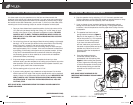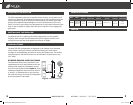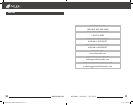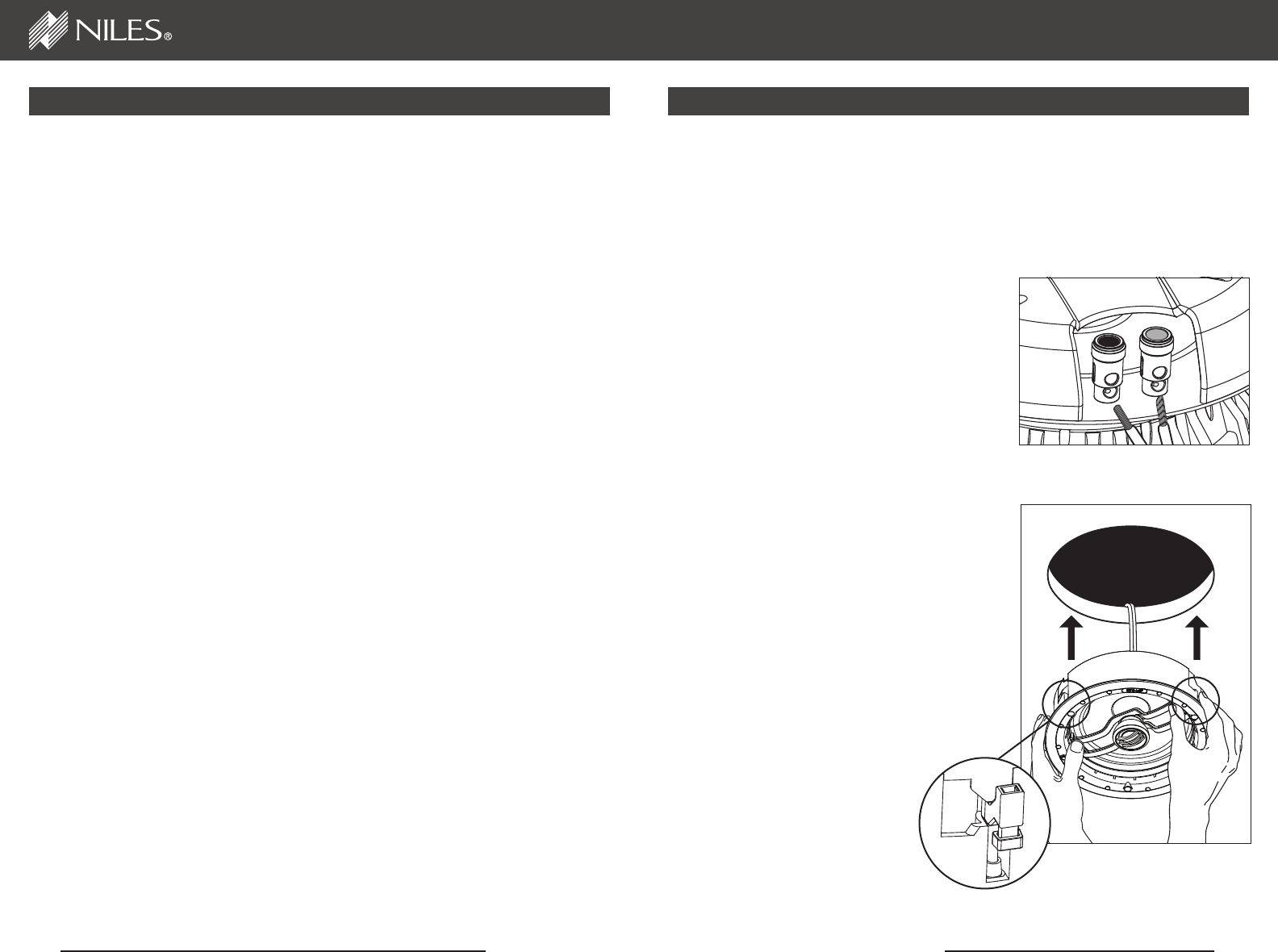
76
WWW.NILESAUDIO.COM NILES AUDIO – 1-800-BUY-HIFI – 1-760-710-0992
INSTALLING ThE LOUdSPEAKERS continueD
6. Prep the speaker wire by stripping 1/4”-1/2” from each speaker lead.
Twist the strands or tin the leads with solder to ensure there are no stray
strands that could short and possibly harm the amplifier.
7. If you’ve chosen to use insulation behind the loudspeaker, place it
through the hole and center it on the opening. If using paper-backed
insulation, it should be placed so that the paper side is away from the
loudspeaker.
8. The speaker has black and red
spring-loaded connectors (Figure 3).
Black is for the negative (-) wire and
red for the positive (+). It is important
to observe correct wiring polarity.
If you have wire other than black
and red, make sure you connect it
the same on the amplifier end as the
speaker end. Failure to do so will
adversely affect the loudspeakers’
performance.
9. Once the speaker wires are
connected, carefully slide the
loudspeaker into the opening hole
(Figure 4). While holding the speaker
in place, tighten the mounting screws
to secure the speaker to the drywall.
We recommend using a motorized
screwdriver. Be careful not to over
tighten.
NOTE: DO NOT CARRY THE SPEAKER BY THE
TWEETER OR TWEETER BRIDGE. THIS MAY DAMAGE
THE SPEAKER.
(CONTINUED ON NEXT PAGE)
INSTALLING ThE LOUdSPEAKERS
It is often easier to lay the speakers out on the oor and then transfer the
locations to the ceiling with a laser plumb bob. If you are using new construction
brackets, place string across the centers of the bracket to provide a way to align
the bracket to the laser. Remember, you will need 1” (2.54 cm) to the sides of the
mounting hole for the mounting clamps to secure the speaker to the drywall.
1. Once you have determined a possible position for the hole cutout, drill a
1/8” pilot hole just barely through the ceiling (1/2” to 5/8” deep in most
homes) in the center of your proposed loudspeaker location. BE VERY
CAREFUL NOT TO DRILL THROUGH EXISTING WIRES, PIPES, OR
STRUCTURE. IF YOU FEEL ANY EXTRA RESISTANCE AS YOU ARE
DRILLING, STOP.
2. Cut a foot-long piece of coat hanger. Bend the wire (creating a right angle)
leaving 5-1/2” at one end (this allows for the extra width of the mounting
dogs). Poke the “L-shaped” wire into the pilot hole and turn it
in a complete circle and move it into the ceiling cavity to make sure you
have approximately 2-3/4” of depth. If the wire’s movement is obstructed
by anything, fill the hole(s) with spackle and try another location. (If there
is any risk of uninsulated electrical connections within the ceiling area,
use insulating gloves or other materials or consult with an installation
professional before proceeding).
3. If the coat hanger moves freely in a complete circle and you have
sufficient depth, tape the template to the ceiling and proceed to layout the
other speakers. Once you are comfortable with all speaker locations, use
a pencil to lightly outline the circular template.
4. Drill the starting point of your cut with a 1/4” bit.
5. If you are cutting drywall, use a sheetrock or keyhole saw. Cut the hole
with the saw at a 45° angle. That way the drywall section can be replaced
cleanly if there is an unseen obstruction behind the wall. IMPORTANT: BE
VERY CAREFUL NOT TO SAW THROUGH EXISTING WIRES, PIPES,
OR STRUCTURE. IF YOU FEEL EXTRA RESISTANCE AS YOU ARE
CUTTING, STOP.
NOTE: DO NOT INSTALL LOUDSPEAKERS BEFORE THE DRYWALL HAS BEEN COMPLETELY
FINISHED AND PAINTED.
Figure 4. Installing a
CM7SD loudspeaker.
Figure 3. Spring-loaded speaker wire
connectors.
Mounting clamps require
1” clearance to the sides
of the hole opening
9901204-RevA-CM7SD-SpkManual-V3.indd 6-7 8/17/11 8:23 PM




